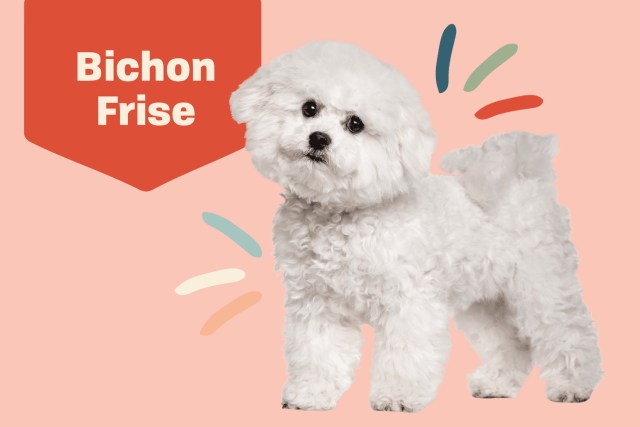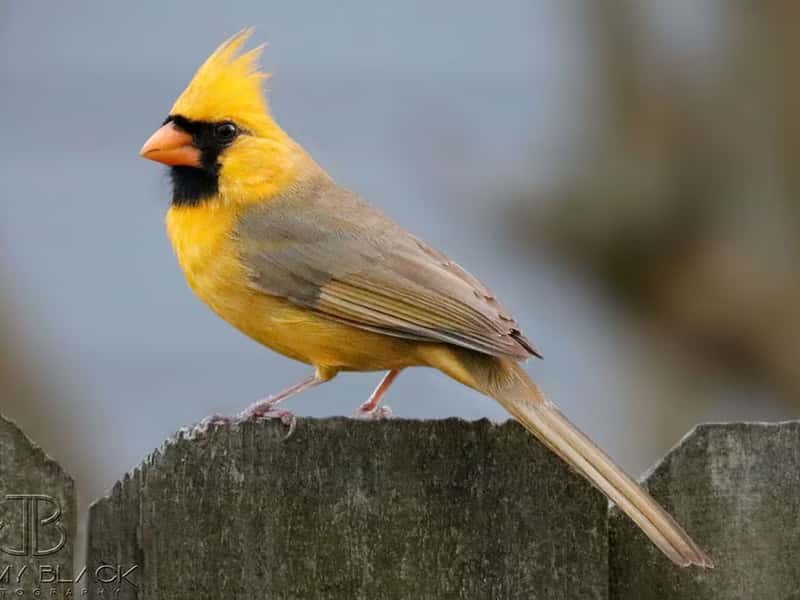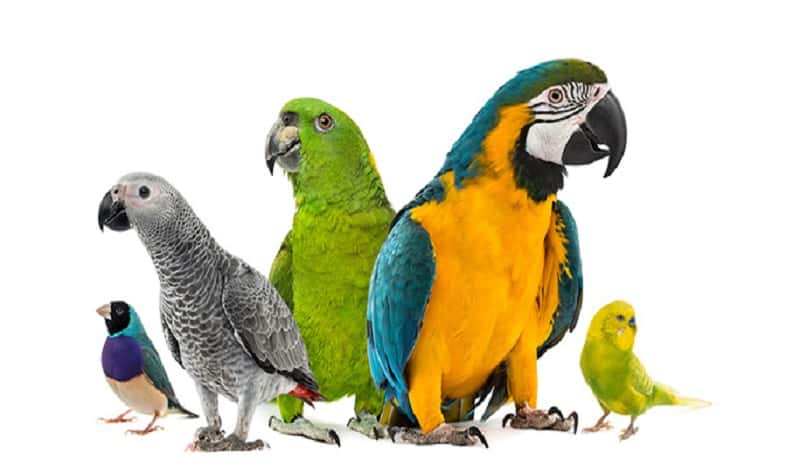Green-Cheek Conure Personality, Food & Care

Green-cheek Conure are little parrots that belong to the Pyrrhura genus and are part of the Arinae subfamily of New World parrots with long tails. Also called as “green-cheeked parakeets,” these birds. They have red on their tails and chests, bright green on the tops of their wings, and bright green on their backs.
They can be identified by their whitish neck ring, black head feathers, and olive green markings around the red patches on their chest and cheeks. Most have white bands around their eyes, black feet, and black beaks. However, intentionally breeding conure birds in captivity has resulted in a number of alterations. Find out the variations between each modification’s personality and how it differs.
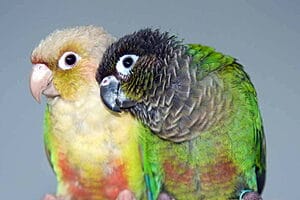
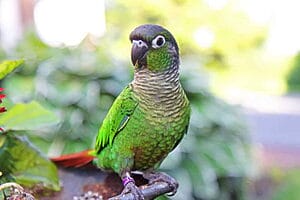
Pineapple Green Cheek Conure And Green Cheek Conure
One of the less frequent conure color mutations is pineapple green cheeks. Despite having outgoing personalities, they have a tendency to bite and must be trained to stop from a young age. With a height of only 10 inches, pineapple green cheek conures are little parrots.
The head and sides of pineapple green cheek conures are yellow, and their back feathers are lime green. Bright red and yellow feathers are mixed across the breast. With a tinge of crimson above the cere, the lower beak seems to be reddish-orange in color. Similar to yellow-sided conures, pineapples have ruby red eyes and tail feathers that range in color from light red to maroon.
They are often quieter than other parrots but like spending time with and amusing their owners. Conures may be taught simple human expressions and tricks. A pineapple green cheek conure makes a wonderful pet, but they require a caretaker that has time to play with and entertain the bird. Conures with green cheeks can be friendly and funny, but they can also be a little more reserved than other conures.
These birds enjoy playing and will benefit from having a variety of toys and a roomy cage to move around in. Because of its comparatively inexpensive cost, tiny stature, temperament, and relatively low noise level—at least when compared to its larger cousins—the Green-cheeked conure is a favorite among bird beginners. The green-cheeked conure is widely available because it reproduces pretty quickly. One of the tiniest conures is the green-cheeked conure. It is roughly 10 inches long, the same size, and mainly green.
The color of the green-cheeked conure is quite vivid on its breast before fading into a faintly reddish belly. The conspicuous golden barring on the chest of the maroon belly is present. It has feet and beaks that are dark gray. When they are young, before their full color develops following the first molt, they are most easily confused.
How To Introduce Two Green Cheek Conures
A great idea to start using bonding strategies with both birds in the later stages of introducing a new bird. Your relationship with both of your feathered companions can be substantially improved by doing simple things like sharing meals, grooming, and playing. When you think your conures are prepared, let them observe your interactions from their individual cages.
Although it’s conceivable for some elder birds to display envious tendencies, it might encourage others to embrace the new bird as a flock member.
Can I Put Two Green Cheek Conures Together
Housing a pair of conures together is crucial to fostering their relationship. The conures can get to know one another since they are housed together. When conures are unrelated and close in age to one another, bonding is more likely to occur. Give them space as well so they may concentrate on one another rather than on you. Remember that bonded conures may become quite upset, ill, and unhappy if separated, therefore it’s crucial to keep them together at all times.
Early on, raise the birds collectively. Two conures can likely be kept together in a cage right away if they are both young (less than a year old) and have previously been weaned. The likelihood that the birds will view one another as a spouse and companion increases when they are raised together. Move your new bird’s cage into the room where your older bird’s cage is located to help your birds get to know one another gradually.
Give them a few days to watch each other from a distance. You’ll be able to spot indications that they are growing accustomed to being close to one another as time goes on. Keep calm and don’t test the limitations of either bird during this period. One of the simplest methods is to use a meal to encourage one bird to develop a strong bond with the other. The end of the quarantine period is the perfect moment to start.
After the quarantine period is ended, it’s still crucial to gradually acclimate your birds to one another. Even birds belonging to the same species could not immediately get along. If you’re not very careful, one of the birds will frequently try to assert their dominance over the other, which can lead to nasty fights.
How To Hold A Green Cheek Conure
Try teaching your conure to perform a flip by pushing its tail up from behind while it is lying on its back once it is at ease being held on its back. Next, extend your finger so the bird will be enticed to land on it and whirl around. You only need to give a conure some time to become used to being held on its back so that it can trust the new position. With one hand over the conure’s back, start holding it close to your chest.
When the conure is upside down but still held by your chest on top and your hand on bottom after a short period, you can start to lean forward. The bird should eventually gain confidence in you to hold it on its back.
How To Play With Green Cheek Conure
Allow them to explore your house. Conures will appreciate the opportunity to fly and discover your house. They might even stop by and spend some time with you. Every day, allow the conure to spend at least an hour outside of its cage. When your conure is outside of its cage, always keep an eye on them to prevent mischief! Before allowing birds to roam freely, make sure your property is bird-proof. Turn off any fans, and shut any windows. Electrical wires and aromatic candles shouldn’t be left exposed.
Get your conure clean. Conures enjoy taking a nice bath every few days. Place the bird in a tub that has been filled with water. The conure will take a bath once it is in the water. Splash the water on them to encourage them if they don’t. Once finished, gently pat them dry while they are wrapped in a towel. While being restrained, lead them outside. Your bird may like going outside. But they must be held down to keep them from taking off. Put the conure in a harness, hold on to their leash, and allow them to fly on your shoulder. They can also be transported inside a bird carrier.
With them, play peek-a-boo. Like kids, conures enjoy playing peek-a-boo. Hide your face behind a wall or something else. Allow your conure to locate you. Say “peek-a-boo” when you emerge. Your bird might soon be running away from you. Play catch with a ball. Catch can be a fun game to play if your bird enjoys tossing objects. To your bird, whirl a plastic ball. They might grab it and throw it away. Roll the ball back to them after retrieving it. Play until your bird becomes disinterested.
How To Get A Green Cheek Conure To Like You
Carefully handle the bird to build its trust. Conures require a firm yet gentle touch, even though they enjoy being picked up and held. You can extend your hand and invite the conure to land on it. Then it can travel to your shoulder or climb up your arm. It can be held in this position for brief periods of time if you grab it by the body with your entire hand. Before allowing young children to pick up the bird, make sure to teach them how to appropriately engage with it. Never hit or squeeze your bird.
Every day, let the conure out of its cage for a number of hours. Conures are incredibly social birds that require a lot of interaction and care to be content. For the most of the time you have the bird at home, you should think about leaving the cage door open. It will be free to move around and engage with you as a result. Allow the conure to sit on your shoulder while you watch television, browse the internet, or carry out other household chores because conures love to be with their owners.
Conures will exhibit undesirable habits, such as shrieking, inappropriate chewing, or even nipping at their owners, if they are ignored. Before you decide to purchase a conure, make sure you have adequate time to dedicate to it each day. Give kids a selection of toys. Conures are highly intelligent birds that need constant stimulation to remain content. Put a selection of toys within the cage for your bird. Choose a range of hues, textures, sizes, and forms. This will support the happiness and entertainment of your bird.
To stimulate your bird, think about giving it challenging toys like ladders and puzzles. Make sure your bird has a lot of toys it can chew on. By doing this, you can prevent your bird from picking up bad chewing habits. If you give your conure enough toys, it will engage in independent play. However, the bird will also benefit from interactive playtime with you.
Pineapple Green-Cheek Conure Picture
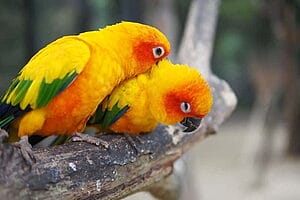
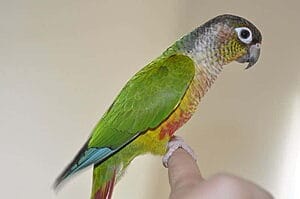
How Do Green Cheek Conures Show Affection
You won’t merely receive a kiss on the lips! Conures frequently shower their caregivers with kisses and nibbles. Make sure not to let that stop you from going about your day because they will want to make their mark! Another indication of their adoration is if they attempt to groom you.
How Intelligent Are Green Cheek Conures
They are intelligent, and capable of learning multiple tricks. They are not especially good talkers, but can learn some speech. Green-cheeked conures are also known for their playfulness and acrobatics. They need plenty of supervision to avoid getting into trouble.
Why Does My Green-Cheek Conure Puff Up
When green cheek conures are content, they enlarge. A green cheek conure will puff out its feathers when it is happy. This action, which resembles a cat purr, is frequently taken by birds to attract attention or to express a desire. Green cheek conures can express happiness and contentment by puffing out their feathers. When a bird is joyful and acting in this way, it usually tries to either attract attention or express a desire for something.
For instance, when being petted, a green cheek conure may puff up its feathers and close its eyes as a way to express enjoyment. A green cheek conure may also puff up its feathers to express desire for a particular item when it sees it, such as a favorite food or toy.
Is My Green-Cheek Conure A Boy Or Girl
Simply told, a conure’s gender cannot be determined by looking at it. You can obtain a DNA test kit that requires sending in a few molted feathers or a few blood drops to determine a conure’s sex with certainty. Of course, you can be certain that the conure is female if she produces an egg.
Why Is My Green Cheek-Conure So Mean
Your Green-Cheeked Conure has transformed from its sweet young self into a very hostile animal, correct? Don’t worry too much; a lot of Green-Cheeked Conure owners experience this. While dealing with this shift in behavior could be challenging, it will pass, and your Conure will quickly return to normal. Your green-cheeked conure’s hostility is probably brought on by hormonal changes. A conure’s hormone changes during puberty or mating season can cause them to behave quite differently, frequently aggressively.
With your conure, the transition from a cute tiny bird to a wild parrot can happen very quickly. They can be the ideal friend one second, then be prepared to chomp off your finger the next. Most owners find it rather shocking because it can be hard to understand how they came to be so aggressive. However, don’t be alarmed; there are several things you can do to lessen the shock.
Why Is My Green Cheek-Conure Suddenly Aggressive
Fear or previous traumatic events are the most frequent reasons of violence in birds. When birds interact with their owners and other people, they can result in handling issues, bites, and attacks. However, because birds are so sophisticated, a variety of factors can trigger hostile behavior:
- In pet birds that were not hand-fed when they were young, fear frequently develops.
- A bird may become fearful of people, other birds, or novel situations if it has not received the correct socialization.
- When their owner engages in social interaction with others, some birds develop jealousy. This appeals to many bird species’ innate “pair bonding” instincts, and in captivity, you can be viewed as your bird’s companion. If you acquired an older bird, there’s a chance its prior owner mistreated or neglected it in some way.
- Due to hormonal changes, some birds develop violent behavior during adolescence. When the bird moves past this phase, this usually ends.
- Aggression may result from defending a birdcage or feeder that they have claimed as their own.
- Stress or a lack of mental stimulation can also cause birds to behave out.
How Long Can A Green-Cheek Conure Go Without Water
It can survive without water for around three days before becoming dehydrated. The majority of a parrot’s body is water (75%). As a result, frequent water consumption is crucial to its life and well-being.
What Can Kill A Green-Cheek Conure
- Lack of water can have catastrophic consequences. The malfunction of a water bottle is the most frequent cause of this. A conure will go without water if the sticks of the ball become clogged or if a bird jams something into the tube, thereby blocking it.
- A conure parrot’s water bowl may occasionally sit unfilled for days or the bird may empty it without anyone noticing, which can lead to lethal dehydration.
- The bird’s wings should be correctly trimmed if it is allowed to fly about outside of its cage. It may therefore smoothly glide across ground.
- An scared bird may fly around the house erratically or, worse yet, perch on top of a tree if the wings are not correctly clipped or if numerous primary wing feathers have grown back.
- A scared conure parrot may misinterpret a window or a mirror for open spaces, go into shock, experience brain bleeding, suffer ruptures, lacerations, ruptured air sacs, and other possibly deadly injuries.
- Just a few of the dangers I’ve heard about include the birds inside flying into pots of boiling water, open drawers, windows, mirrors, fondue pots, and a burning fireplace.
- Birds may be poisoned by cookware and other household objects with polytetrafluoroethylene (PTFE) surfaces. The gas released when the device is overheated (at 530 °F or higher) is extremely lethal to birds.
- Teflon cookware, irons, ironing blankets, and heat lamps with a PTFE layer should not be used near birds because even with regular use, some vapors may be released.
- Conures that reside in smoke-filled homes may experience sinusitis, conjunctivitis, coughing, and sneezing, which may go away on their own if the bird is relocated to a smoke-free environment. Some birds that are occasionally exposed to smoke may also develop lethal chronic secondary bacterial infections.
- Numerous common household cleaners and disinfectants emit gases that can be poisonous or lethal to birds. Ammonia, phenols, and chlorine bleach can all release toxic fumes that can be fatal or cause severe irritation.
- A bird’s “cute” habit of going to the bottom of its cage to find its favorite family members can develop with properly clipped wings. People who cannot see a small bird that is moving across the floor could easily hurt it.
American Dilute Green Cheek Conure Price
You can anticipate paying anywhere from $120 and $600 for a Green Cheek Conure. The bird will be alright on its alone, but it’s preferable to obtain it with a buddy, ideally another member of the same species because they don’t get along with most breeds.
Creator: PetsCareTip






